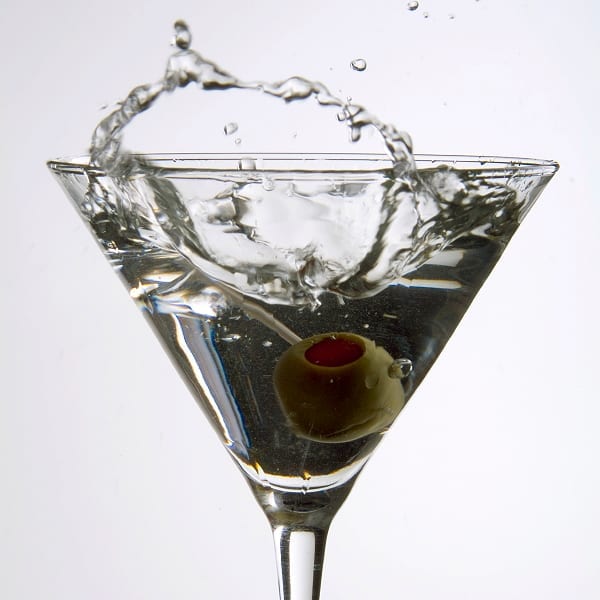All About Vodka
No longer about bootlegged industrial ethanol in deepest darkest Russia, luxury-grade vodkas are now distilled globally for your drinking pleasure. Learn how to taste and what our fave brands are.

Vodka is the key ingredient in many a cocktail, not least James Bond’s ‘shaken not stirred’ vodka martini, but it’s more often associated with the mass-produced mega-brands carelessly muddled with cola or lemonade. Craig Butcher spoke to Justin Smyth from Dutch vodka distillery Ketel One to get to know the UK’s biggest-selling spirit a little better.
How Vodka Is Made: Much less about the location of the distillery, the quality and taste of a vodka is driven by just two key elements – the grains from which they are distilled, and the production methods used. The majority of vodkas are produced from wheat, favoured in Western-style and Russian vodkas to produce a lighter flavour profile. Since wheat prices shot up, rye is being increasingly used, particularly in Russia, giving a spicy, creamy finish. Polish vodkas like Luksusowa favour potatoes, tend to have a higher alcohol content and are more calorific whereas US-style vodkas use corn which gives a buttery, popcorn-like sweetness. Barley is used rarely, though an example is Finlandia which has similar flavours to corn-based vodkas such as Rain Vodka.
The alcohol is either distilled in batched pots, or continuously in columns. Most of the recognised brands are produced quickly in columns, whereas artisan brands produce limited quantities in copper stills, allowing the flavours to develop more roundly. Filtration through charcoal draws out impurities for a cleaner, crisper flavour. Lastly, once the alcohol levels are reduced, demineralised water is added – 60% of a 40% ABV vodka will be made up of water, so the quality of what goes in is important.
Tasting vodka: First, use your eyes – pour a small measure into a wine glass. The vodka should have absolute clarity, if it’s clouded it should be discarded. Swirling the vodka will reveal the ‘beads’ – the tiny drops which collect around the side of the glass at the ‘high-tide’ line. The closer together they are, the higher the alcohol content.
Smell the vodka at a slight distance – any sulphurous smells suggest it’s tainted, only possible with corked vodka bottles, but still unlikely. On the nose you’re looking for vanilla, nuts or spices but they’re often hard to pick out from smell alone.
Now taste the vodka, swirling it around your mouth. This first swig will tell you almost nothing as the alcohol will blow your palate apart, but will ready your palate for the next swig, which is what it’s all about. Try the vodka once more. A quality vodka will be smooth and without harshness in your throat. Look out for any sweetness, spices or bread-like notes. Consider the mouthfeel or ‘weight’ of the vodka in your mouth, and then its length – does the flavour linger at all? A good quality vodka should leave a film around your mouth and last.
Hints and Tips: In the same way that you wouldn’t chill a decent red wine, good vodkas should be enjoyed at room temperature, rather than chilled. Warmth brings out the aromas and flavours, the cold simply constricts these. If you want to bring the alcohol level down, adding water is perfectly acceptable. Flavoured vodkas can add an extra dimension to neat vodka and can be useful in cocktails.
Using in and with food: Vodka can make an excellent palate cleanser or aperitif on its own, or use a lemon-flavoured vodka to make a refreshing sorbet. Vodka-based espresso martinis make a great after-dinner reviver. Alternatively, use in ceviche, in salmon dishes or tomato-based pastas for a refreshing kick. Wintry, fatty Eastern European foods like a meat borscht pair particularly well with vodka, which cuts straight through the heaviness and aids digestion. Why not experiment with our vodka-based recipes such as this pasta sauce, or these hot cross buns.
VODKAS TRIED AND TESTED
Ketel One
Wheat-based, there’s some citrus on the nose. Incredibly smooth on the palate, the mouthfeel is a delight, with good weight and a lingering, pleasurable aftertaste of aniseed. Great on its own. Buy at: Selected Waitrose, Tesco, Majestic, RRP £19.99 for 70cl bottle.
Smirnoff Black Matroushka Doll
From mega-brand Smirnoff comes their small-batch vodka distilled in copper stills. There are apples and pears on the nose, with some sweetness on the palate. Distinctly flavoured and unlike most other vodkas, a sure-footed step-up from Smirnoff Red. Buy at: Waitrose and Selfridges, £20.99 for 70cl bottle.
Grey Goose
This French wheat-based vodka has a come-hither bottle and is incredibly smooth on the palate. There’s no harshness at all and an excellent, creamy length with hints of aniseed. A delicious. favourite. Buy at: Waitrose, £37.50 for 70cl bottle.
Absolut Masquerade
Made with ‘winter wheat’ and unfiltered, there’s strong vanilla on the nose. Far sweeter than many other brands, it has an early sweetness that is followed by a slight pepperiness. Quite a dry vodka with minimal length and some fieriness. Recommended for first tastings and those with a slightly sweeter tooth. Buy at: Selfridges and Asda, £13.99 for 70cl bottle.
Belvedere
A rye-based vodka from Poland, column-distilled and charcoal-filtered, there are gentle hints of bread, nuts and spices on the nose. On the palate, there’s a real smoothness with a crisp aftertaste, though limited mouthfeel. Well worth a try. Buy at: Most Waitrose, £30.00 for 70cl bottle.
Snow Queen
This wheat-based vodka from Kazahstan is five-times distilled for a cleaner, crisper taste. With a lively but not unpleasant pepperiness on the palate, the aftertaste develops from sweetness through to a welcome bitterness. Buy at: Waitrose, £19.99 for 50cl bottle.
Fever Tree mixers
Granted, there are times when neat vodka isn’t quite what we’re after, in which case it’s perfectly acceptable to mix with any of Fever Tree’s range. Made using subtle botanical flavours, natural juices, soft spring water and cane sugar, the tonic water is even served at El Bulli as a frozen tonic soup. If it’s good enough for Ferran Adria… Buy at: From selected Sainsbury’s, Tesco, Waitrose and Majestic.
Subscribe to our magazine
Food stories, skills and tested recipes, straight to your door... Enjoy 5 issues for just £5 with our special introductory offer.
Subscribe
Unleash your inner chef
Looking for inspiration? Receive the latest recipes with our newsletter